You’re planning to spend some time on or near the water, perhaps for an entire day, and you want to keep your phone charged.
Using a solar charger to power your phone is a great option if you will have access to direct sunlight. If you will be blocked from direct sunlight, there are more reliable options to consider besides a solar charger.
Let’s discuss your options and explain how to solar charge your phone while fishing or boating.
How to Charge Your Phone and Small Devices While Fishing and Boating
Your two most realistic charging options will be:
- Solar Panel Charger (pictures of mine below)
- Power Bank
Solar Panel Charger
This is a very easy and realistic option to use while on the water. You simply unfold your solar panels and expose them to direct sunlight and you can get a charge started almost instantly.
These solar chargers fold up and are easy to carry with you or maybe even slip into a tackle box.
I have an extensive article that compares solar chargers vs. power banks that you can access here. I put these measurement photos in that article but I will put them here also for your reference. These are of a solar charger that I own (RAVPower 24 watt).
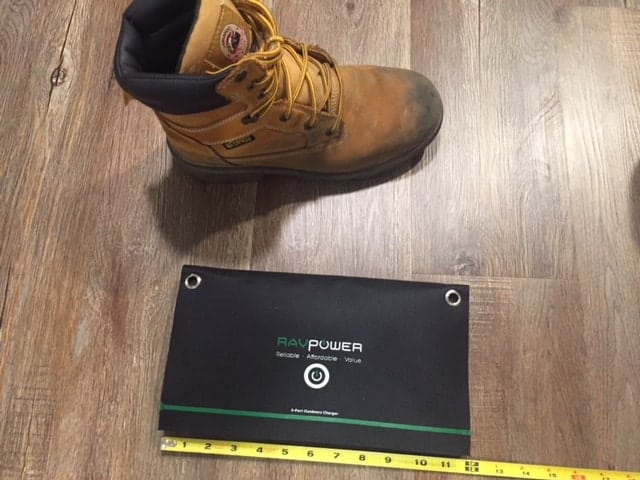
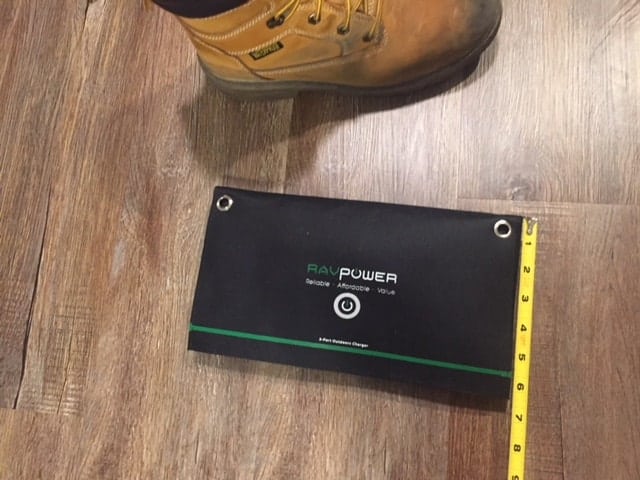
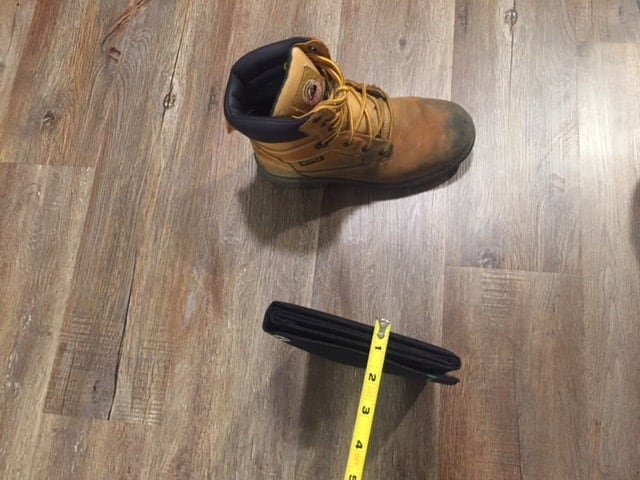
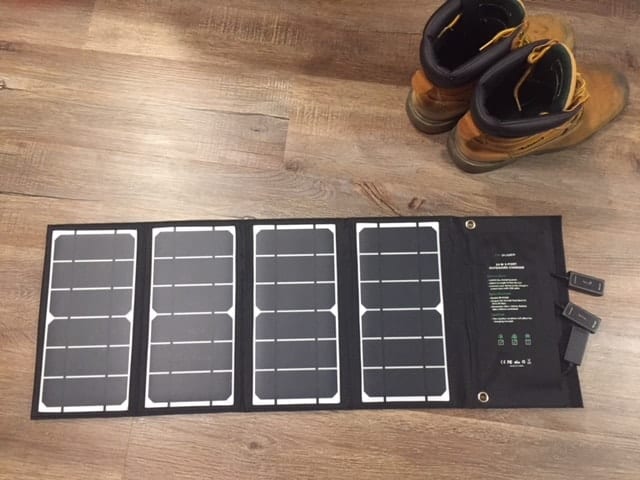
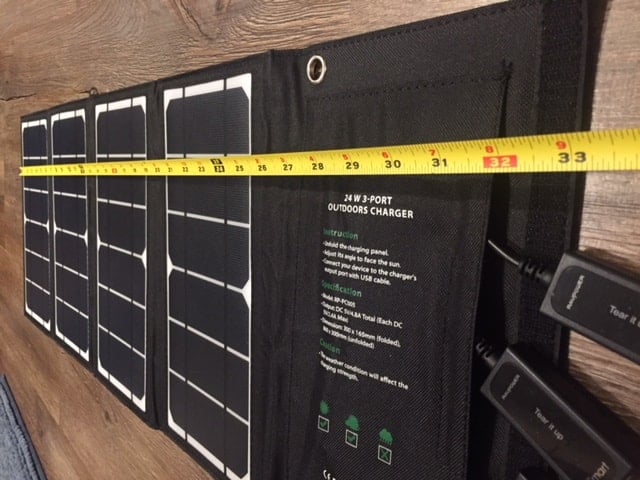
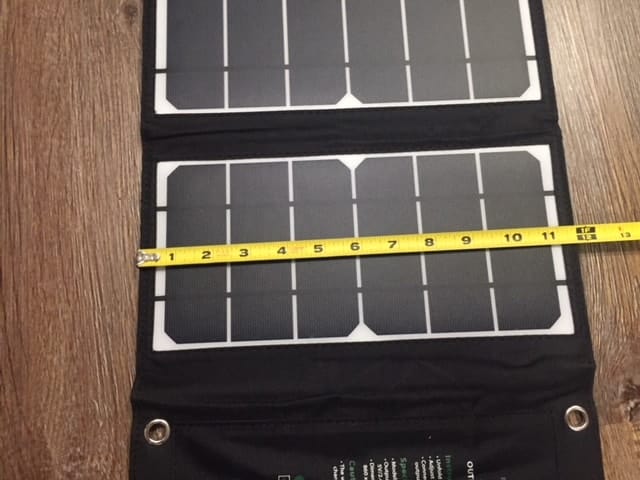
Here is a picture of my solar charger charging one of my power banks and a small camping lantern:
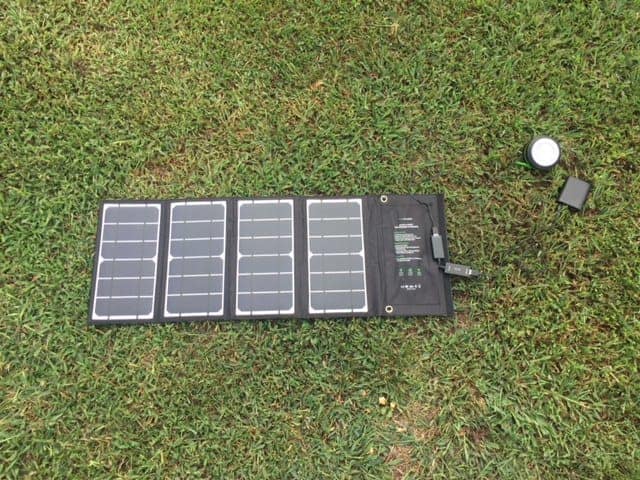
If you are boating with friends on a lake for a day, this charger has multiple USB ports so that more than one device can be charged at the same time. Solar chargers can be a great solution if you do not have any other charging options on your boat. They are durable and use clean energy to power a phone.
They will need access to direct sunlight to function properly. On overcast days, you may be able to get a small amount of functionality out of them – perhaps approximately 25% of their normal charge rates. The nice thing about solar chargers is their long-term dependability. Not only do they hold up well over time, but they provide you access to a never-ending power supply: the sun. As long as the sun is shining, you can get access to power.
Let’s discuss the price of solar chargers, and then explore other options.
How Expensive are Solar Device Chargers?
Solar panel phone chargers can range in price from $30 to $250. The cost of your device will depend on several factors. The amount of wattage and overall size of the device will affect price. The amount of USB ports it has will affect price. And of course, brand will impact the final price also.
My charger pictured above is a 24 watt solar charger. Follow the link posted up above in the article to see its current price. If you are looking to charge only your phone, you won’t need this much wattage. There are other, less powerful, options available. My RAVPower solar charger has 3 USB charge ports. Three is usually the maximum number of ports you will find in a device like this. If you have other devices you take on the water with you, this may be a perfect option.
Night Fishing
For those of you who do early morning or night fishing, there are other options that you can consider. Again, you will need access to direct sunlight for a solar charger to work. These chargers will not be an option for night fishing. A power bank would be a perfect charging option for night fishing.
Power Banks
A power bank is a portable charger with an internal battery that itself can be charged. The battery stores electrical energy for you to use to power your phone or device later. Much like a financial bank holds your deposited money for later use, a power bank holds deposited electrical energy for you to use later when you are away from power sources.
Power banks differ in size depending on the storage capacity you are looking for. Many power banks are small enough to slip in your pocket. Power banks are ideal for a one-day trip to the lake. Depending on the capacity of the power bank you use, you should be able to charge your device fully several times if needed.
Power Bank Functionality
The energy capacity of a power bank (and cell phone batteries) is measured in milliamp hours (mAH). So if you have a power bank that has a storage capacity of 10000 mAH, and your cell phone battery has a storage capacity of 2500 mAH, based on out-of-box advertised mAH of your power bank, you should be able to charge your cell phone four times (10000mAH/2500mAH).
Unfortunately, out-of-box mAH is never accurate. There are conversion energy losses that occur when electrical energy is passed from a power bank battery through a USB cable and into a phone battery. Several factors can influence how much energy is lost. In this post, we will not do a deep dive into the specific mechanics of these devices and why conversion loss is a problem. All you need to know is to expect 20-30% conversion loss of the out-of-box advertised mAH storage capacity of your power bank.
So again, if you have a 10000 mAH power bank, and we subtract the 30% conversion loss, the true energy-to-phone capacity of your power bank will be approximately 7000 mAH. This will reduce the amount of charges you can get from a power bank.
But regardless, power banks are very helpful and can be perfect for a one-day fishing trips.
Power Bank Size
Power banks range in size depending on storage capacity and brand. Most power banks will fit in your pocket. I own several Anker Powercore 10000mAH power banks. Here are some pictures of one of the power banks I own so that you can see size.
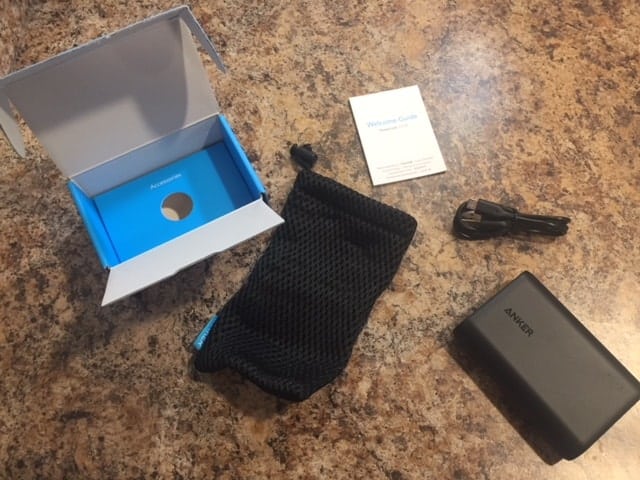
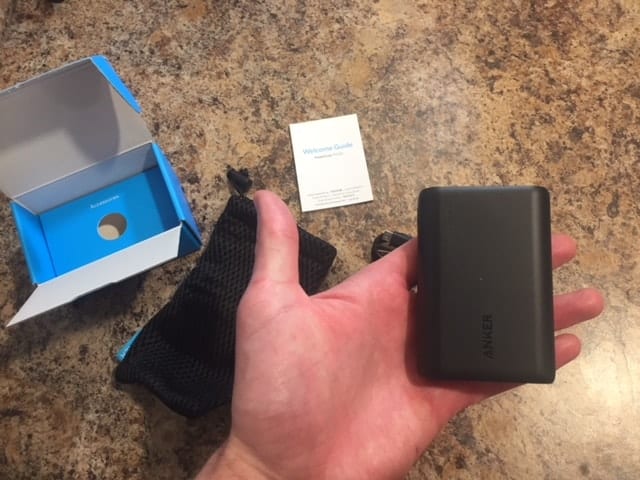
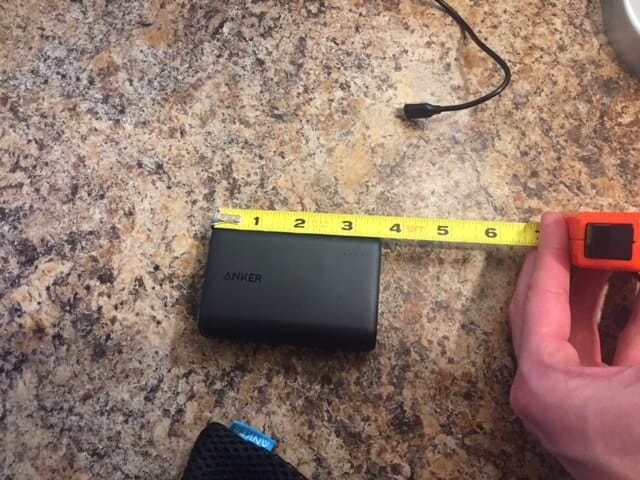
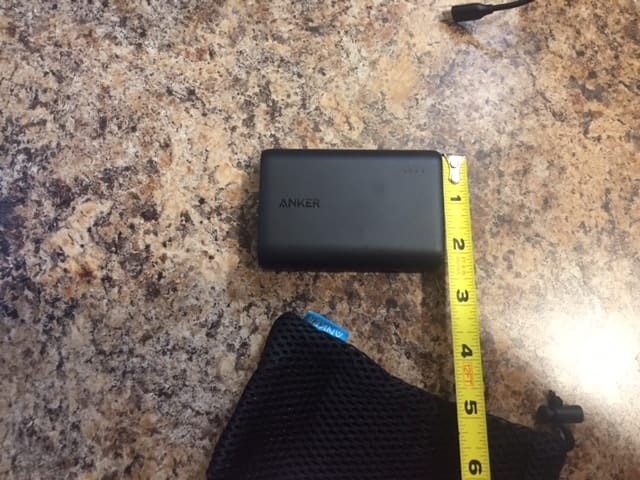
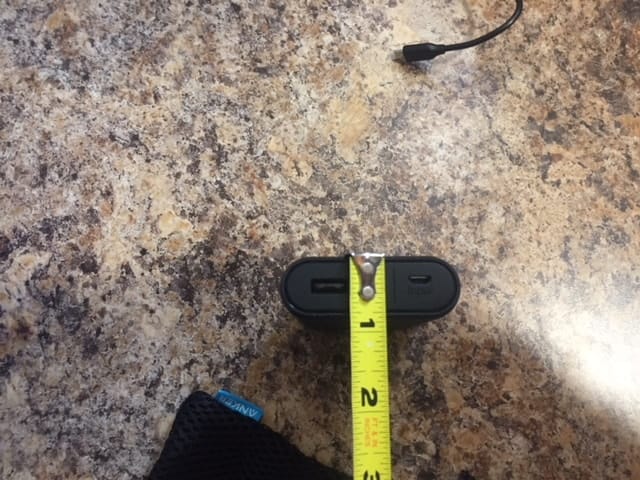
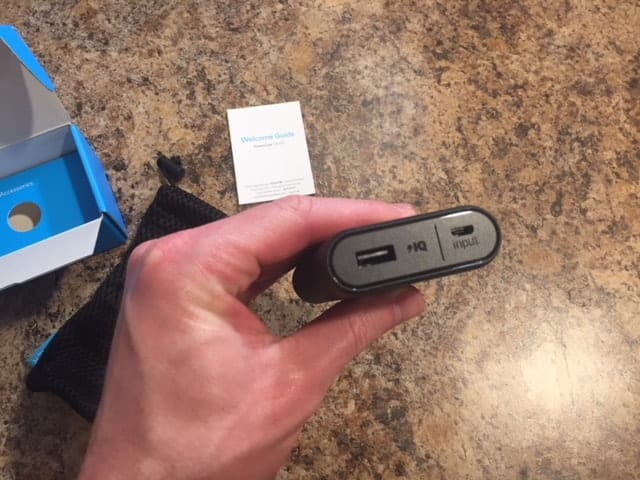
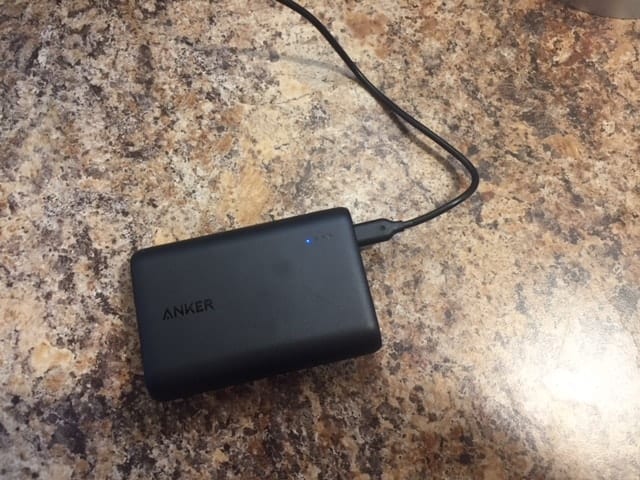
What is a Solar Power Bank?
A solar power bank is a power bank with a small solar panel fixed to the device that if exposed to direct sunlight, can help recharge the internal battery of the power bank.
I consider solar power banks to be gimmicky. The more solar panel surface area you have, the more power you can generate. These tiny devices have small surface areas and just not enough room to attach meaningful solar panels.
Let’s say you have a 25000 mAH power bank with a built-in solar panel. Let’s also say that under direct sunlight the solar panel produces a max input current of 300 mAH. That means that you would need over 83 hours to fully re-charge the power bank’s internal battery from the solar panel. That’s 83 hours of direct sunlight. It could take weeks to get 83 plus hours of direct sunlight.
These devices are not useless because at the end of the day, they are still power banks that can be fully re-charged through an electrical outlet. But if you plan to buy one thinking the solar panel will be a great compliment to the device, I would caution you to temper your expectations.
Should You Consider a Battery-Powered Generator?
Battery-powered generators are basically larger power banks. They store energy in an internal battery for you to use at a later time. They can just store much more energy than small power banks. Although they have larger energy capacities, the overall product is not that large or tough to carry. They’re similar in size to a tackle box.
If you are simply looking to keep your phone charged while fishing or on the lake, this would be a bit of an overkill. But if you have several devices you are looking to charge, or perhaps trying to light up a nearby campsite, this product could prove useful.
Sun Protection
Don’t forget sun protection while on the water. If you do not know the importance of broad-spectrum sunscreen, see my article here.
